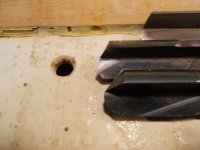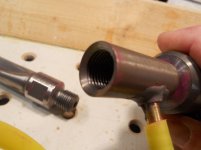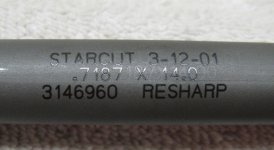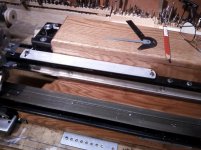What kind of lathe?
If you are using a metal lathe, then by all means the Aloris style quick release boring bar holder is the way to fly, that way you use the Carriage to bore, way faster, easy to align, and rock solid.
If you have a lathe like the Cuesmith Deluxe then make a saddle to mount on the carriage. A rectangular block of aluminum with a one inch hole bored through at the proper distance above the mounting surface of the cross slide will provide a very secure mount for a gun drill. Four socket head bolts can hold this to the carriage. If care is used in the machining of the block, you should easily be able to align your gun drill for drilling with the carriage. Also one can use the rear air fitting on the gun drill, and be able to put a dead center in your tailstock to align the drill using the center of the air fitting! I explained all this a couple years ago when I sold maybe 40 of these drills to Azers. Using the tailstock is very slow, and not needed. It is as easy to make a carriage holder as it is machining the drill end to fit in the tailstock chuck. Good Luck!
If you are using a metal lathe, then by all means the Aloris style quick release boring bar holder is the way to fly, that way you use the Carriage to bore, way faster, easy to align, and rock solid.
If you have a lathe like the Cuesmith Deluxe then make a saddle to mount on the carriage. A rectangular block of aluminum with a one inch hole bored through at the proper distance above the mounting surface of the cross slide will provide a very secure mount for a gun drill. Four socket head bolts can hold this to the carriage. If care is used in the machining of the block, you should easily be able to align your gun drill for drilling with the carriage. Also one can use the rear air fitting on the gun drill, and be able to put a dead center in your tailstock to align the drill using the center of the air fitting! I explained all this a couple years ago when I sold maybe 40 of these drills to Azers. Using the tailstock is very slow, and not needed. It is as easy to make a carriage holder as it is machining the drill end to fit in the tailstock chuck. Good Luck!







